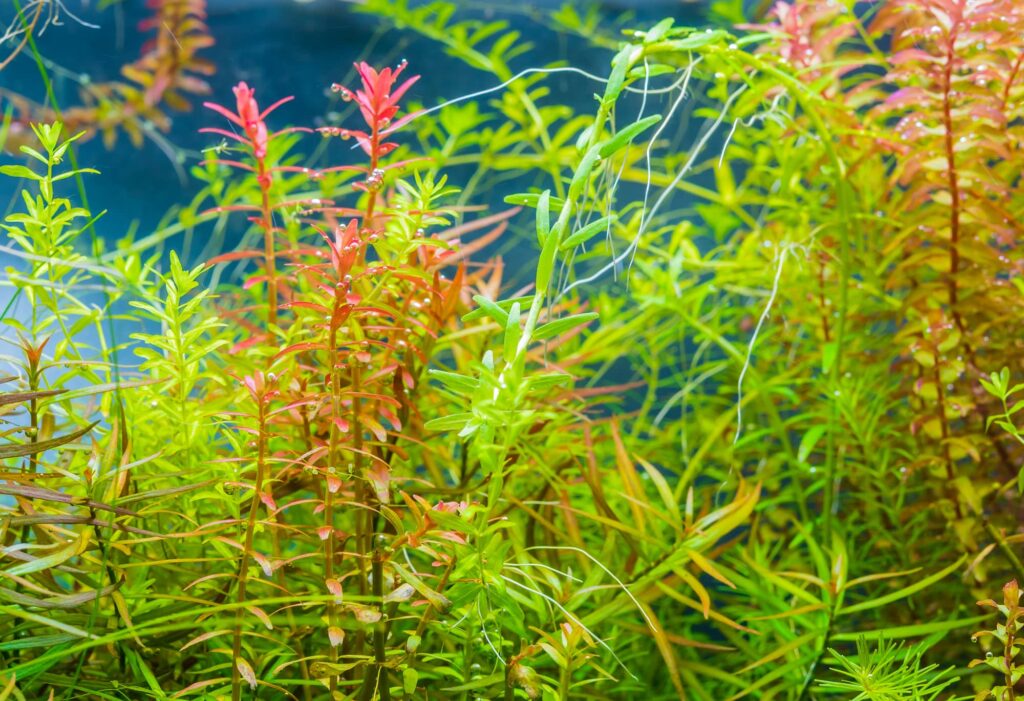You might think that fish are the best part of having a backyard pond, but the endless species of aquatic plants available really puts the entire ecosystem into focus!
Plants are important for pond setups. They provide food and protection for fish, improve water quality, and can even help combat erosion. Luckily, many species require little to no additional care or maintenance.
Keep reading to find out everything you need to know about pond plants and the best species for your setup!
Why Should You Add Plants to Your Pond?
To understand some of the benefits of adding aquatic plants to your pond, first, imagine a natural pond or lake.
Take notice of the foliage around the pond, including trees, bushes, and flowers. Next, look and see if there are any floating plants. Look down into the water and see if the bottom is bare or if it’s covered by plants or leaf litter.
Altogether, these plants make up an ecosystem that supports each other and a multitude of animals. The same is true for your home pond system.
Some of the benefits of adding plants to your pond include:
- Food and protection
- Better water quality
- Erosion control
- Overall aesthetic
Food and Protection
Aquatic life depends on plants for food and protection.
Various amphibians, birds, and fish all use the structures that an aquatic plant provides for shelter. Floating plants help block out the midday sun while submerged plants can help keep fish from predators above the water.
These leafy structures are also commonly used by fry and juveniles until they’re ready to adventure out into more open water.
Simultaneously, many of these same animals rely on these plants for food whether it be in the form of the entire plant or microorganisms that grow on the plant.
Better Water Quality
One of the best ways to instantly improve water quality in a pond is by introducing live plants; the same is true for the aquarium.
All live plants use nutrients like nitrogen, phosphorus, potassium, as well as many other micronutrients. Water quality often suffers from an imbalance of these nutrients, namely nitrates and phosphates.
Live plants help use up excess nitrates and phosphates while oxygenating the pond water as they perform photosynthesis.
Many outdoor ponds suffer from nuisance algae problems since algae also thrive with excess nutrients. Adding more attractive and beneficial water plants can outcompete many of the nuisance species for resources, ultimately solving many algae growth problems in the process.
Erosion Control
Erosion is inevitable. Anywhere there is water there will be sediment that is being washed away and the landscape will always be changing, however slowly.
Within a few years, you may find that you need to add more sediment to the banks of your outdoor pond. This can be solved with smart infrastructure and rocks, but live plants are one of the best ways to lessen direct effects.
Species of emergent and shoreline plants have a deep root system that compacts and stabilizes sediment. This means it takes longer for waves, wind, and weather to wear away at the shore of the pond or lake.
Overall Aesthetic
Making an outdoor water feature look good is hard work! Not only do you need to maintain water parameters and the livelihood of your animals, but nature also takes its course.
Keeping a pond is a constant battle against how you want your pond to look and what nature has in mind. Unwanted species and weather will dictate the overall appearance of your system without regular maintenance.
However, using the right plants and animals can make for a natural aesthetic that benefits the surrounding ecosystem. Plants can be both beautiful and purposeful.
How Can Climate Affect Aquatic Plants?
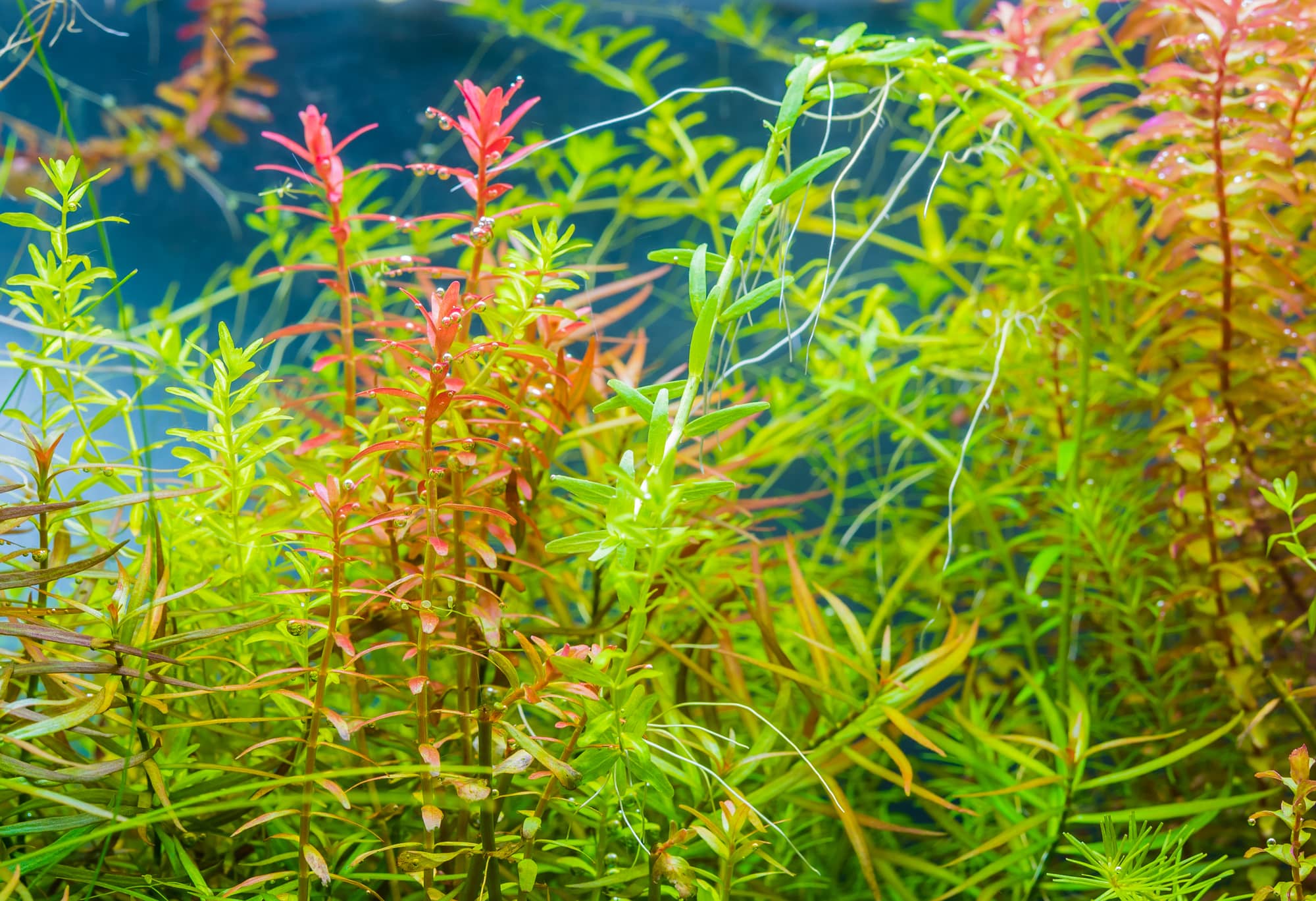
When picking plants to buy for your pond, it’s important to choose ones that are compatible with your climate, or weather patterns over time.
Picking native species that can withstand your pond’s changing climate makes preparing for cooler temperatures easy; there is little to no work that needs to be done to prepare your ecosystem for seasonal change.
This is much more difficult if using plants that are not adapted to large changes in temperature.
Some hobbyists go to great lengths to keep their ponds stable. This may include heating the pond or moving plants in and out of greenhouse settings.
Still, expect some dieback with changing seasons. Most likely, your pond will look its best during the summer months.
The Best Aquatic Plants for Your Pond
Before going into specific plant species, we need to understand the different types of plants available.
There are submerged, floating, emergent, and shoreline species that all play a different role in the ecosystem:
• Submerged plants are typical aquatic pond plants. They grow when completely covered by water with roots that anchor into the substrate. Some submerged species may grow so tall that their flower or stems grow out of the water.
• Floating plants sit at the top of the water. They often have long roots that collect nutrients and gases.
• Emergent plants are different from floating plants as they are rooted in the substrate. These plants have most of their foliage out of the water but are still connected to one area, usually in shallow water.
• Shoreline plants live at the edges of ponds. They are especially helpful for lessening erosion and are very adaptable to wave and tidal conditions.
Now that we understand where each type of plant lives in the grander scheme of the ecosystem, what are some of the best species for each?
Submerged Plants
Most species of submerged pond plants grow very quickly, taking up excess nutrients and oxygenating the water. Many of these species are also commonly found in the aquarium setting.
Hornwort
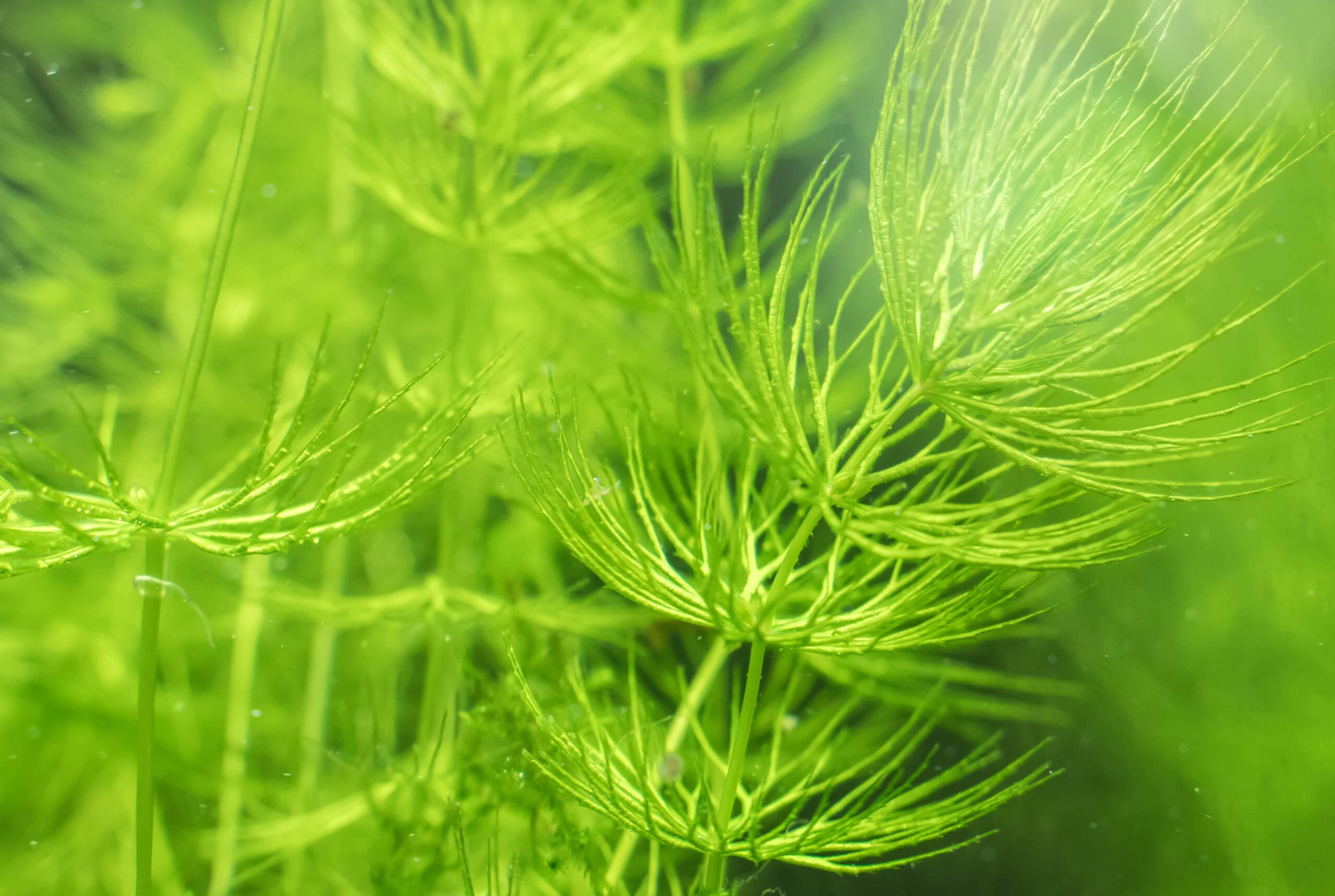
- Scientific name: Ceratophyllum demersum
- Hardiness zone: 5-11
- Light requirements: Full sun to part shade
- Water depth: 1′ – 6′
Vallisneria
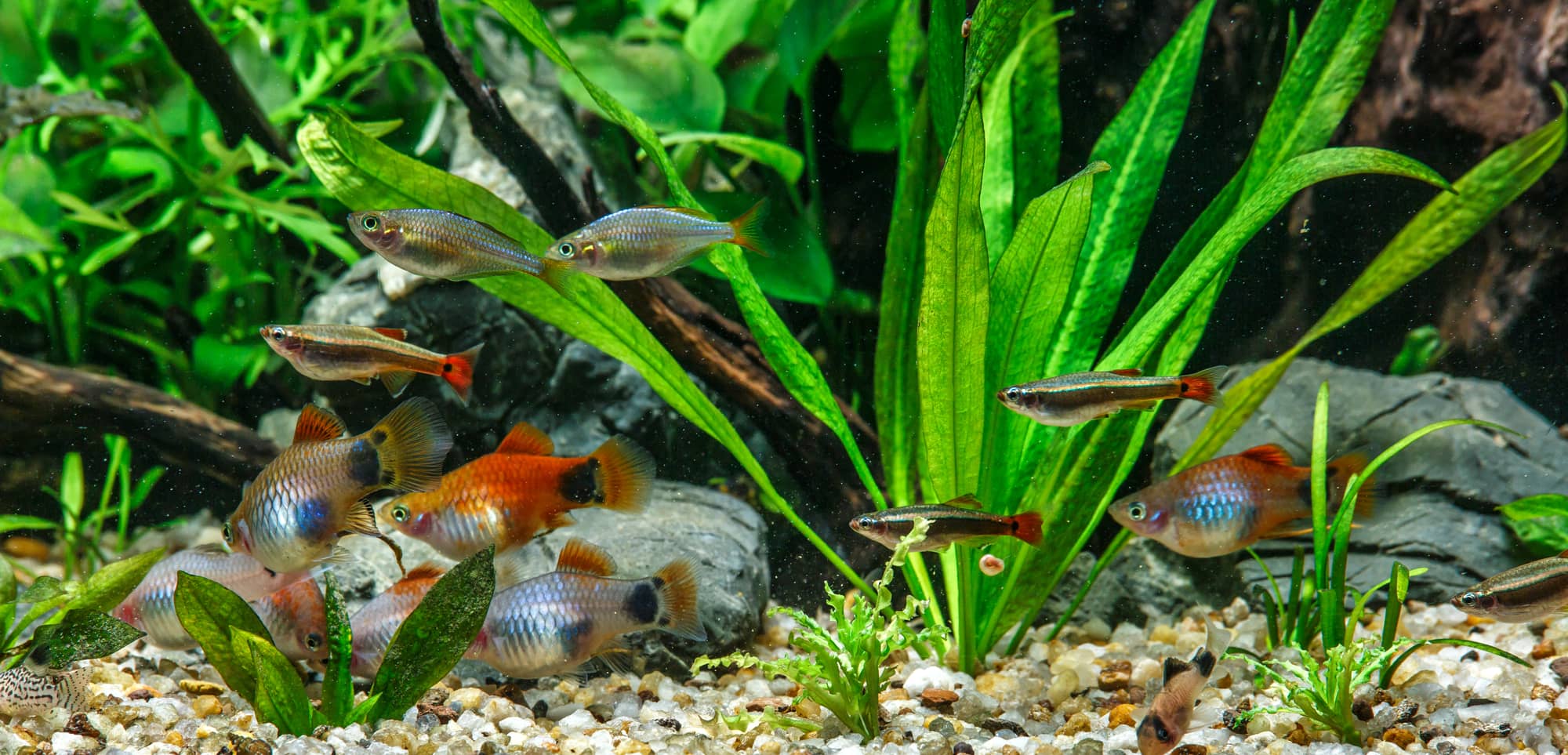
- Scientific name: Vallisneria spp.
- Hardiness zone: 4-10
- Light requirements: Sun to shade
- Water depth: 1′ – 15′
Anacharis
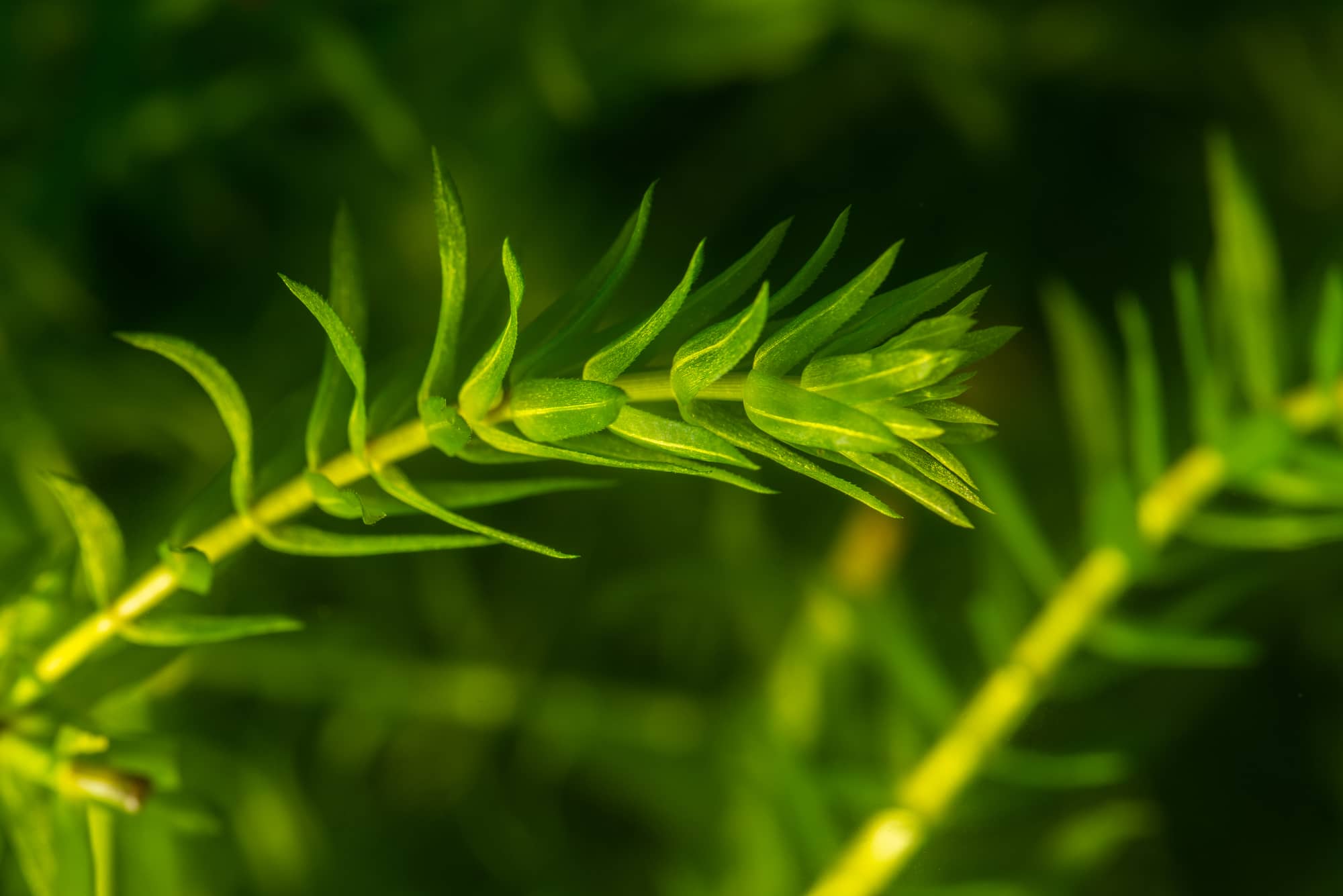
- Scientific name: Elodea spp.
- Hardiness zone: 6-10
- Light requirements: Full sun to shade
- Water depth: <40′ depending on water clarity
Rotala
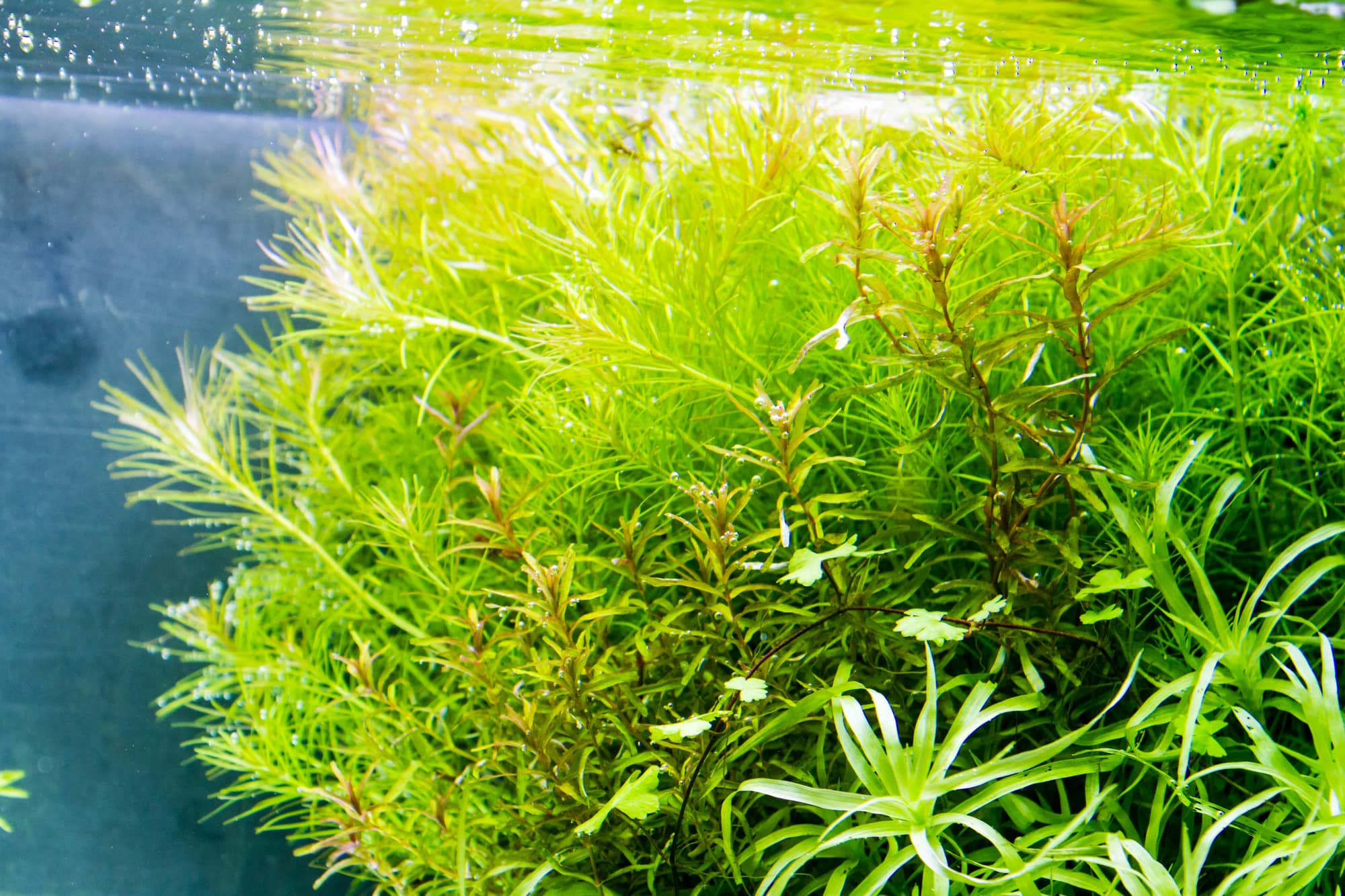
- Scientific name: Rotala spp.
- Hardiness zone: 8-12
- Light requirements: Full sun to shade
- Water depth: <2′ depending on water clarity
Bacopa
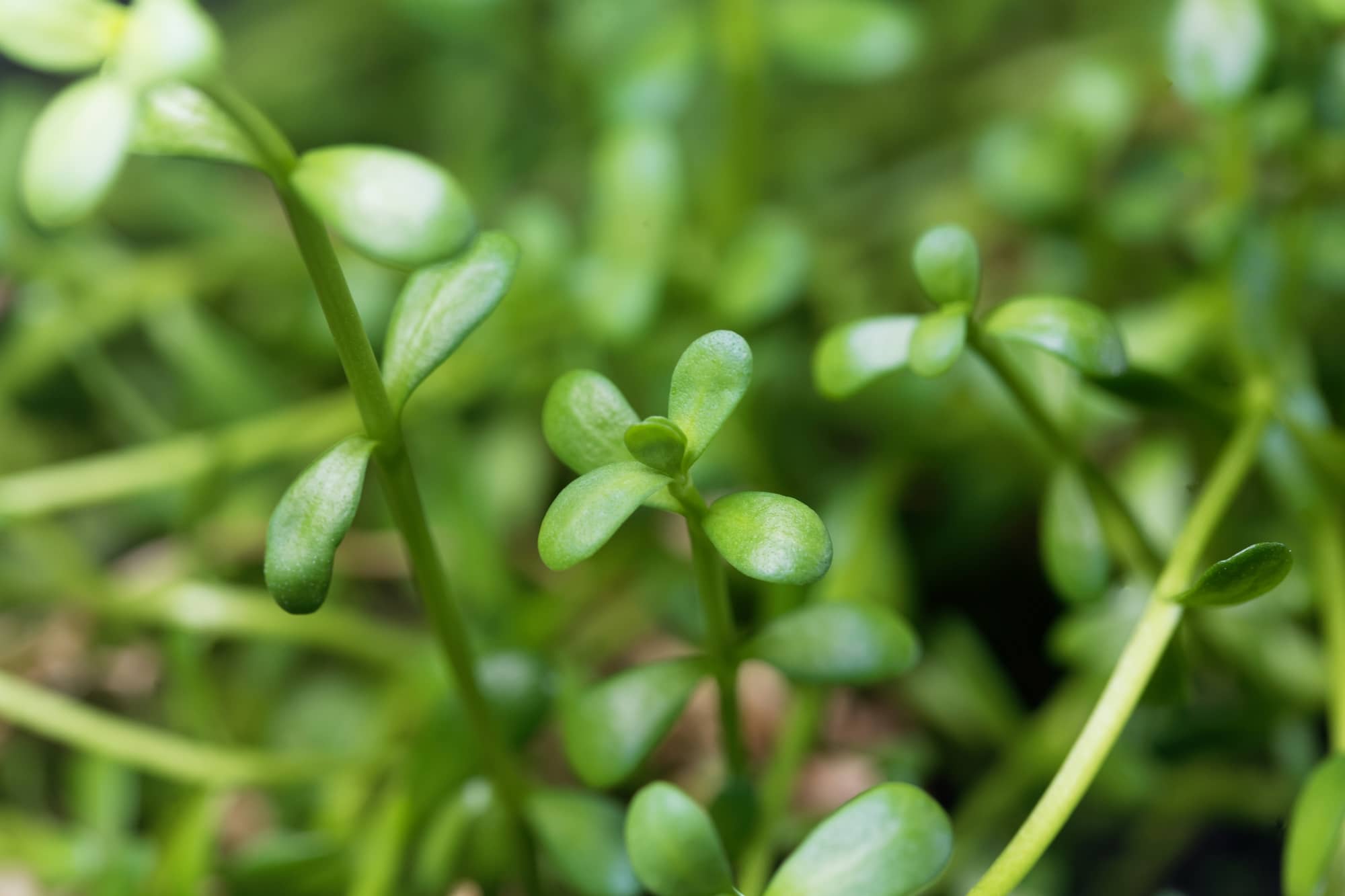
- Scientific name: Bacopa spp.
- Hardiness zone: 9-11
- Light requirements: Full sun to part shade
- Water depth: 1-6 inches
- Flower: Blue flowers
Floating Plants
Many species of floating plants are also seen in the aquarium hobby. These plants are great at providing relief for fish and invertebrates from direct light while taking up extra nutrients, providing oxygen, and giving shelter to juvenile fish and amphibians.
It should be noted that many floating plants are highly invasive species. Before adding these plants to your pond, make sure to check local laws and regulations.
Water Hyacinth
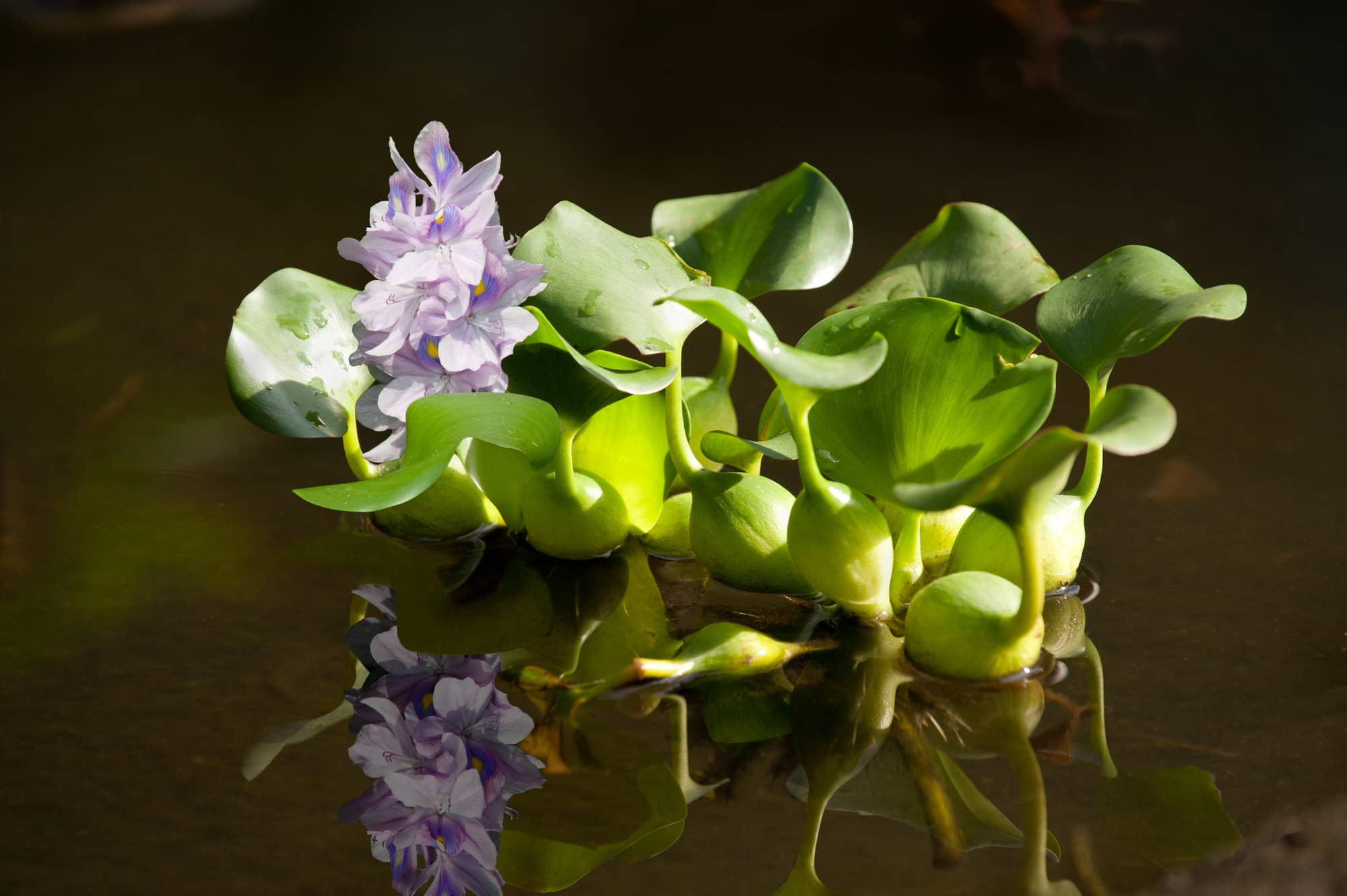
- Scientific name: Eichornia crassipes
- Hardiness zone: 9-11
- Light requirements: Full sun to part shade
- Flower: Lavender-blue flowers
Water Lettuce

- Scientific name: Pistia stratioes
- Hardiness zone: 9-11
- Light requirements: Part shade to full shade
- Flower: Inconspicuous
Frogbit
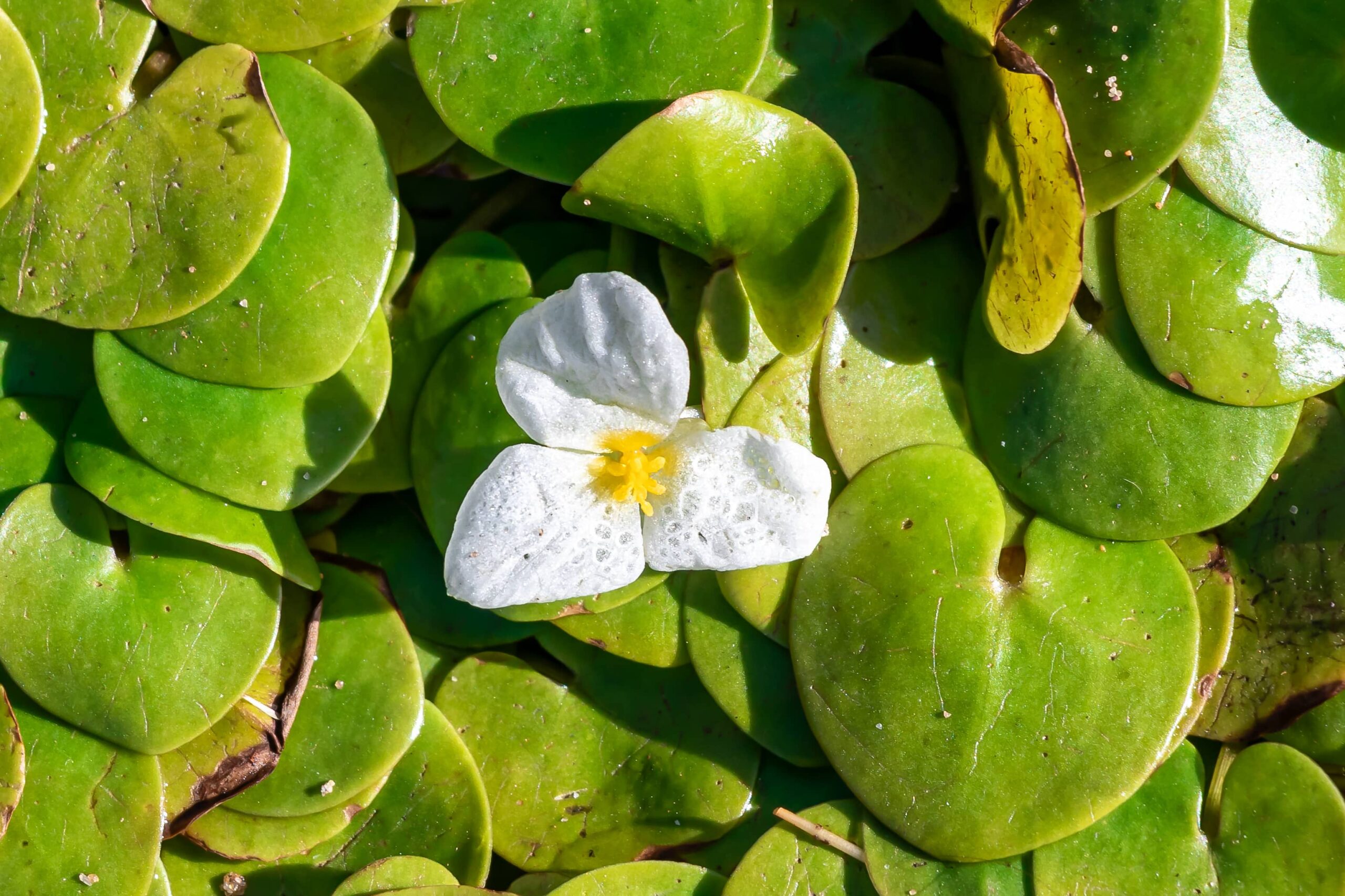
- Scientific name: Limnobium spongia
- Hardiness zone: 6B-10
- Light requirements: Full sun to part shade
- Flower: White flowers
Duckweed
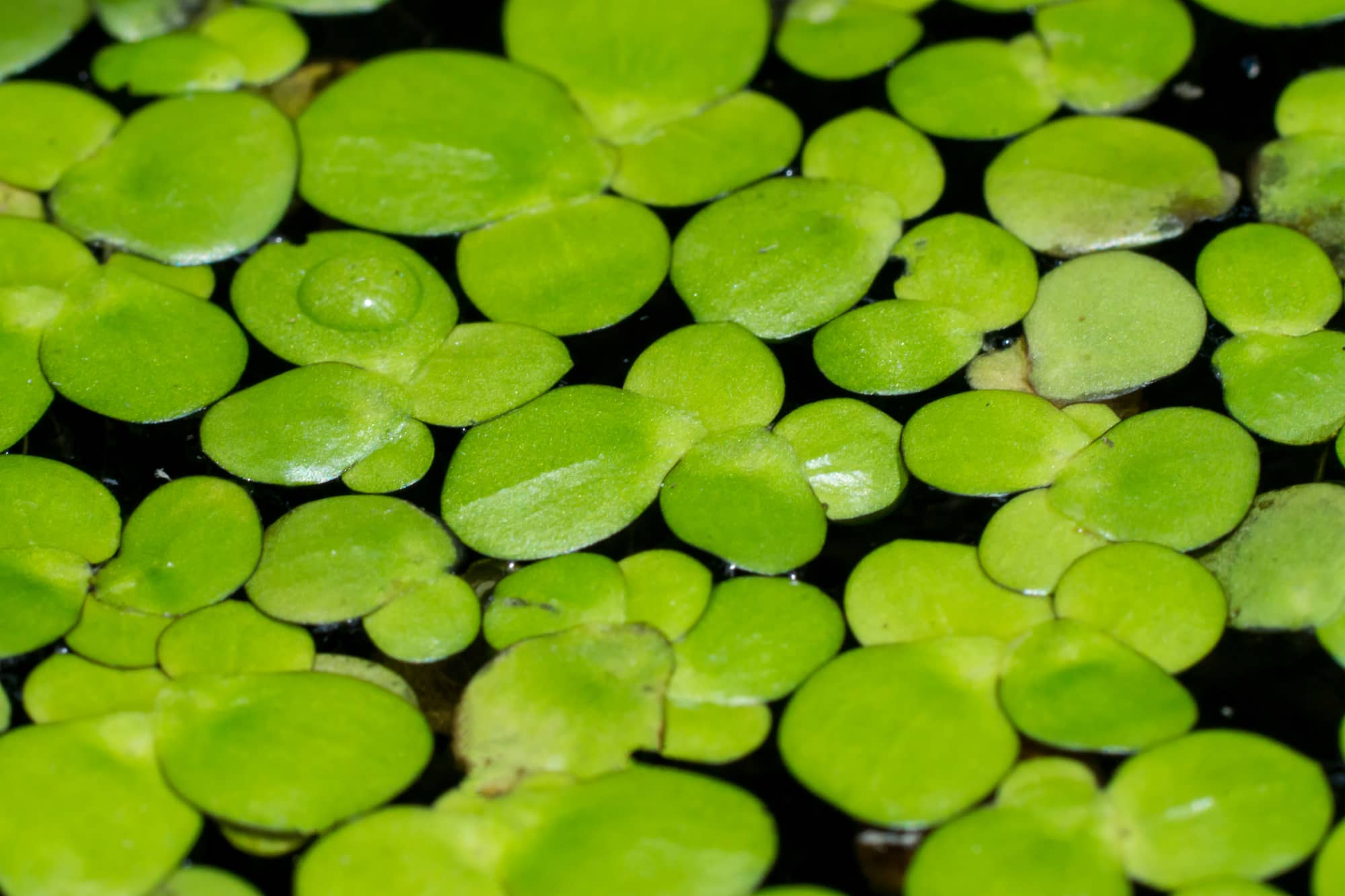
- Scientific name: Lemna minor
- Hardiness zone: 4-11
- Light requirements: Sun to part shade
- Flower: Inconspicuous
Emergent Plants
Some of the plants listed before, like Bacopa and Rotala species, can be grown as emergent plants, too. Simply allow them to grow right out of the top of the water. Some may even bloom.
Other species do best when planted in shallow water conditions to make growing above the surface easier.
Creeping Jenny
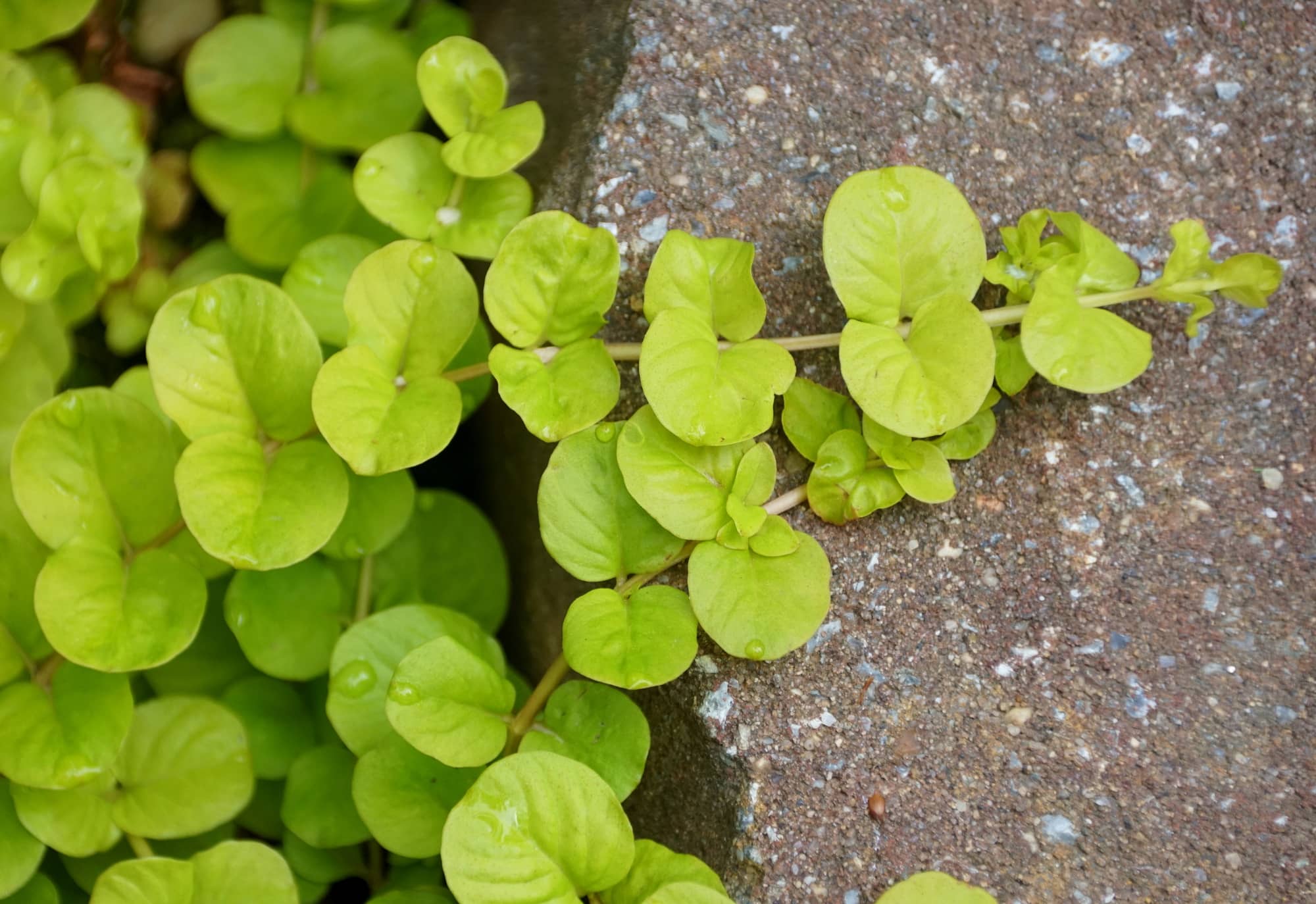
- Scientific name: Lysimachia nummularia
- Hardiness zone: 5-11
- Light requirements: Full sun to shade
- Flower: Yellow flowers
Aquatic Mint
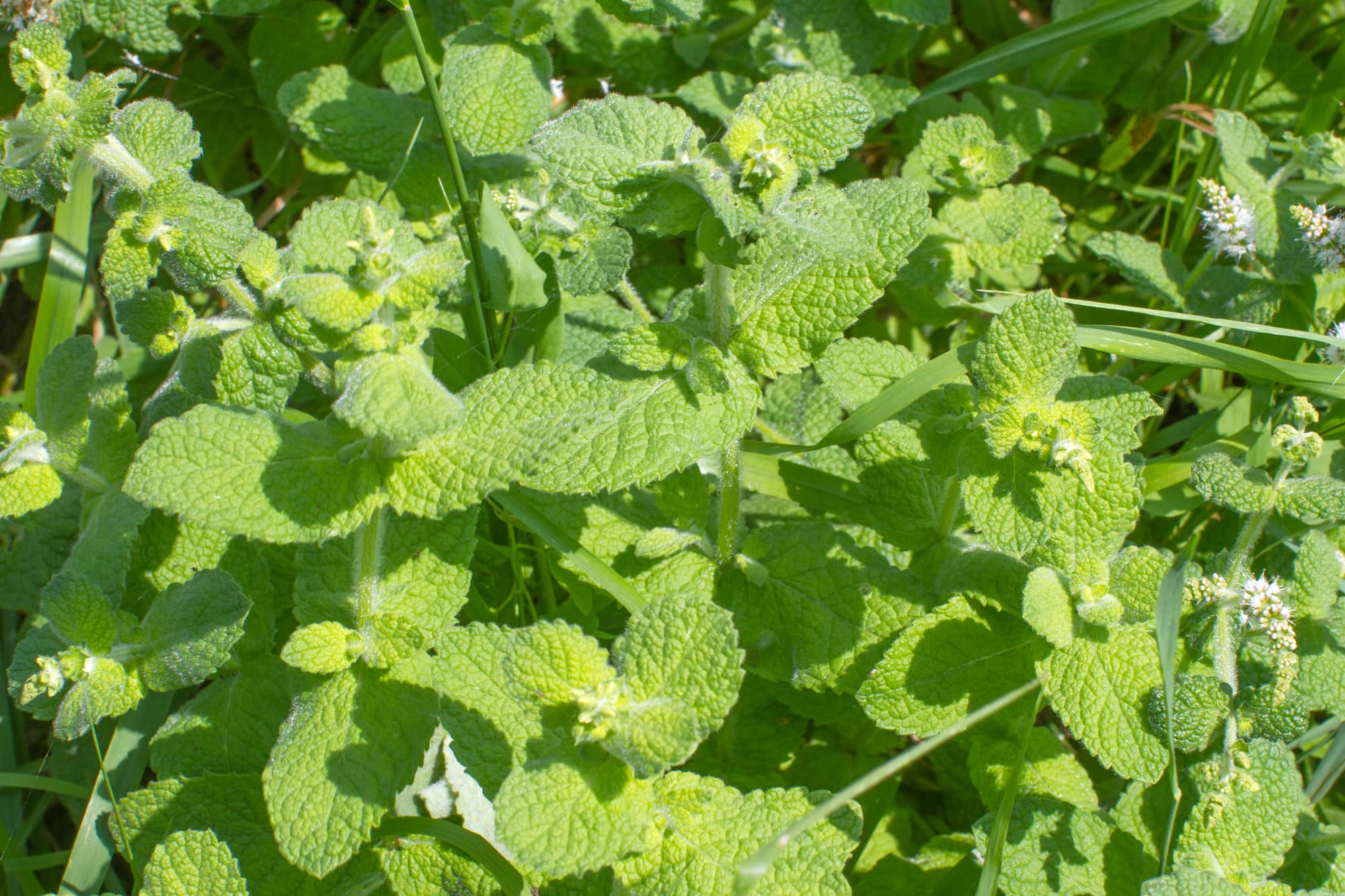
- Scientific name: Mentha aquatica
- Hardiness zone: 5-11
- Light requirements: Full sun to part shade
- Flower: Lilac-pink flowers
Water Primrose
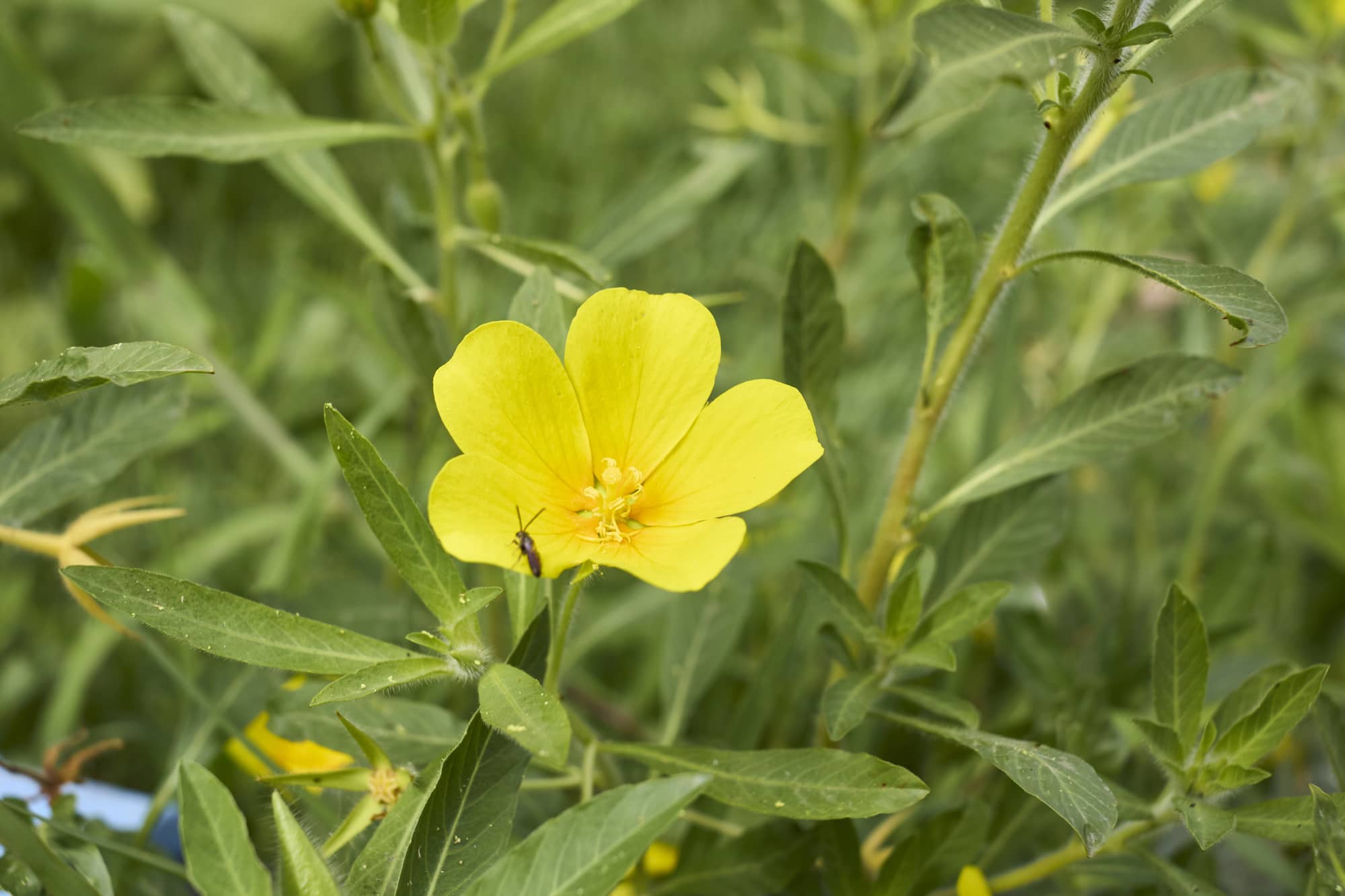
- Scientific name: Ludwigia peploides
- Hardiness zone: 4-8
- Light requirements: Full sun to part shade
- Flower: Yellow flowers
Water Lily

- Scientific group: Nymphaeaceae family
- Hardiness zone: 4-11 depending on the species
- Light requirements: Full sun to part shade
- Flower: Large variety of colors
For a full care sheet on the many different species of water lily available, make sure to check out our list here.
Cattails
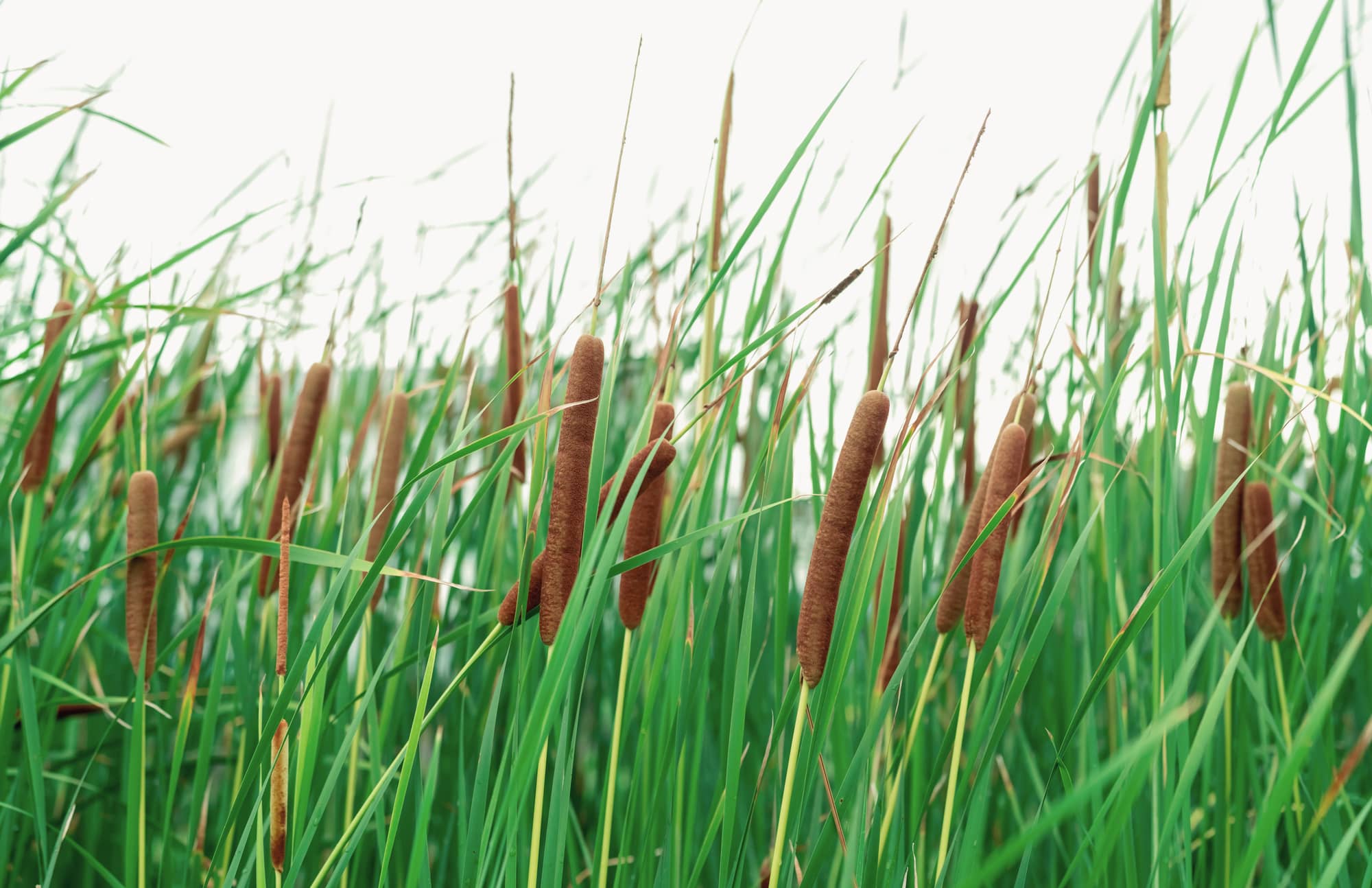
- Scientific name: Typha spp.
- Hardiness zone: 3-10
- Light requirements: Full sun to part shade
- Flower: Brown cylindrical spikes
Shoreline Plants
Lastly, you will want to decorate the borders of your pond or lake with marginal plants. These plants can greatly range in shape and size from bushes to trees.
Here are some of the best marginal plants to grow alongside your pond to create a natural ecosystem and to help prevent erosion.
Bog Lily

- Scientific name: Crinum americanum
- Hardiness zone: 8-10
- Light requirements: Full sun to part shade
- Flower: White or pink flowers
Soft Rush
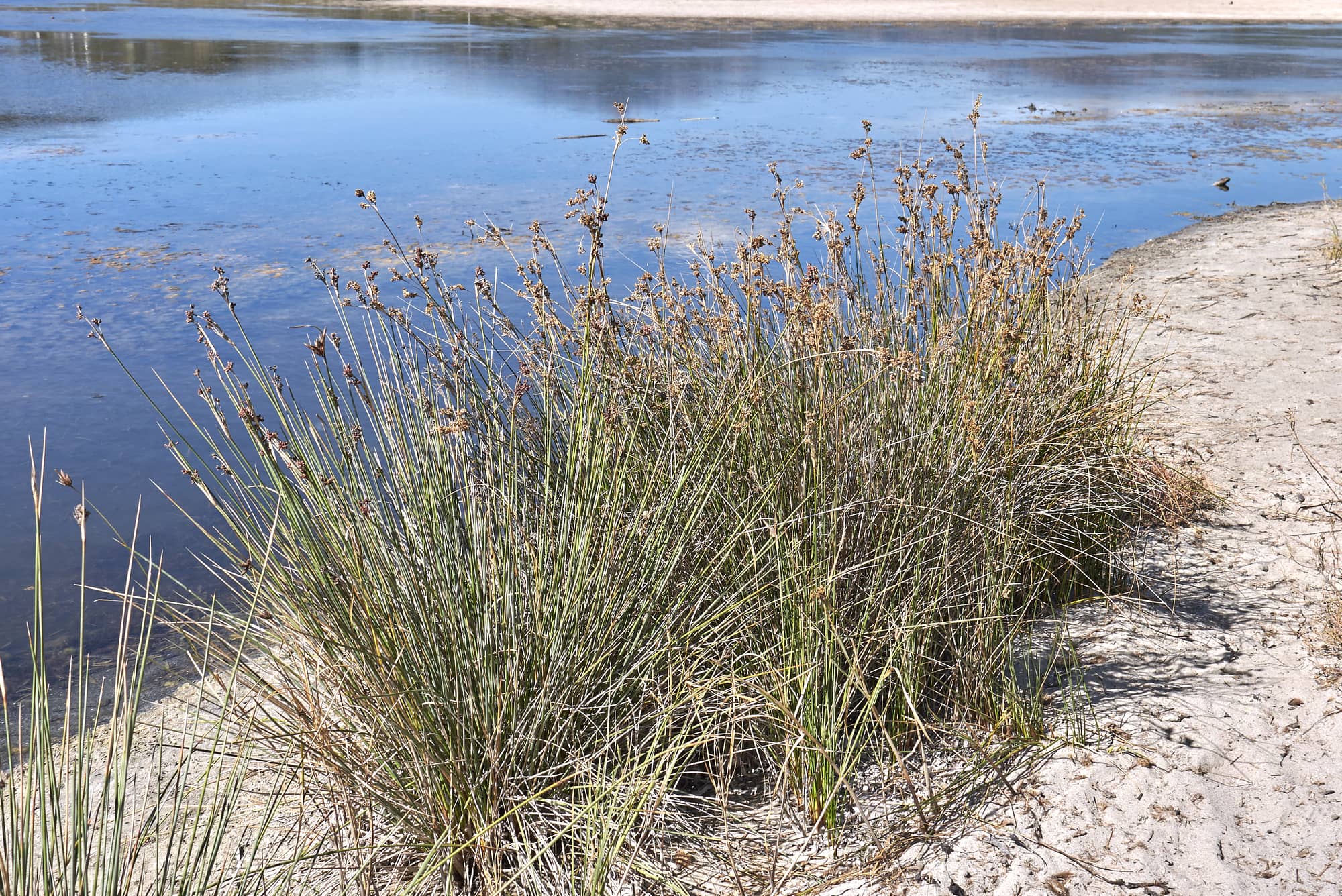
- Scientific name: Juncus effusus
- Hardiness zone: 2-9
- Light requirements: Full sun to part shade
- Flower: Small, nearly inconspicuous white flowers
Willow Trees
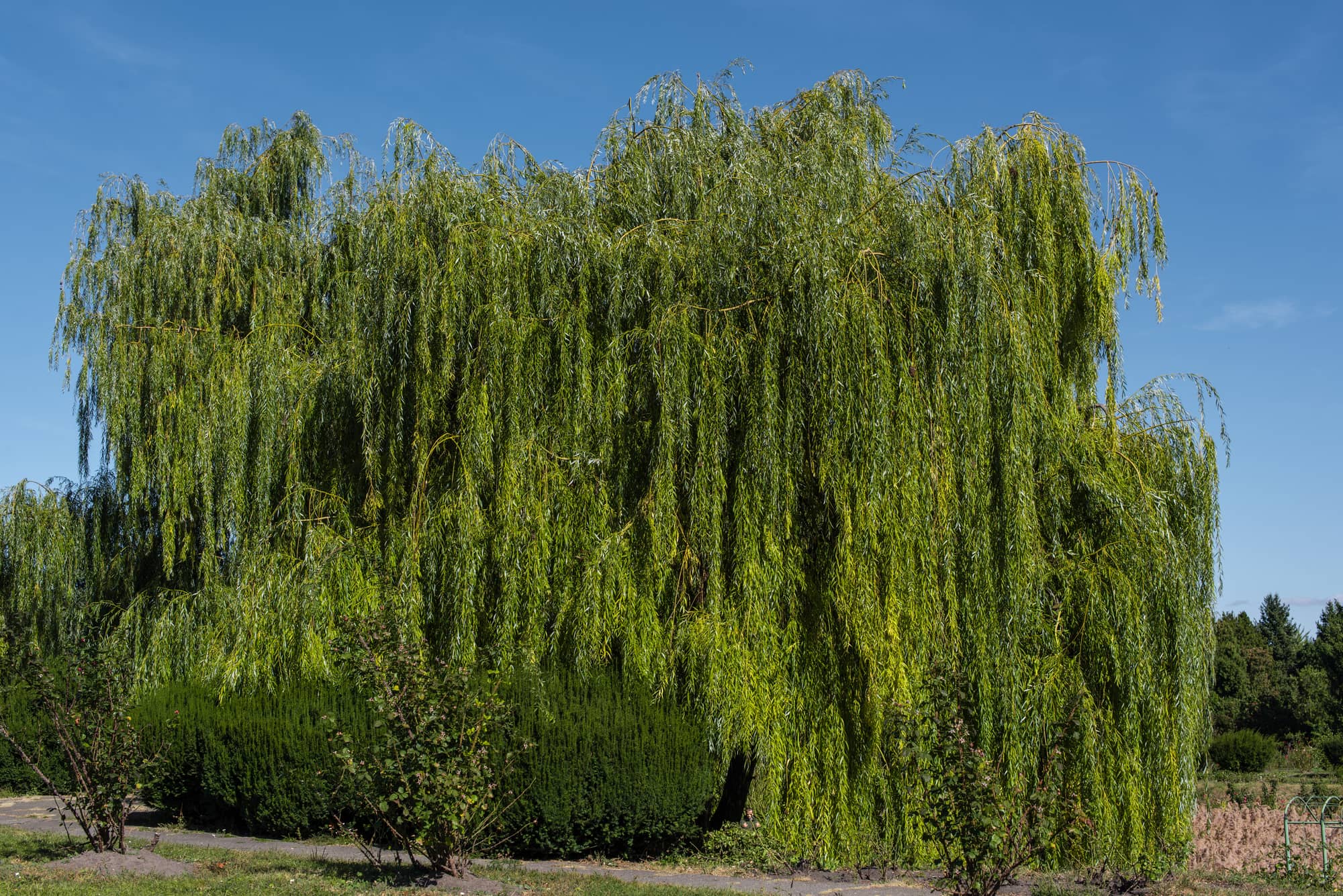
- Scientific name: Salix spp.
- Hardiness zone: 4-10
- Light requirements: Full sun to part shade
Junipers
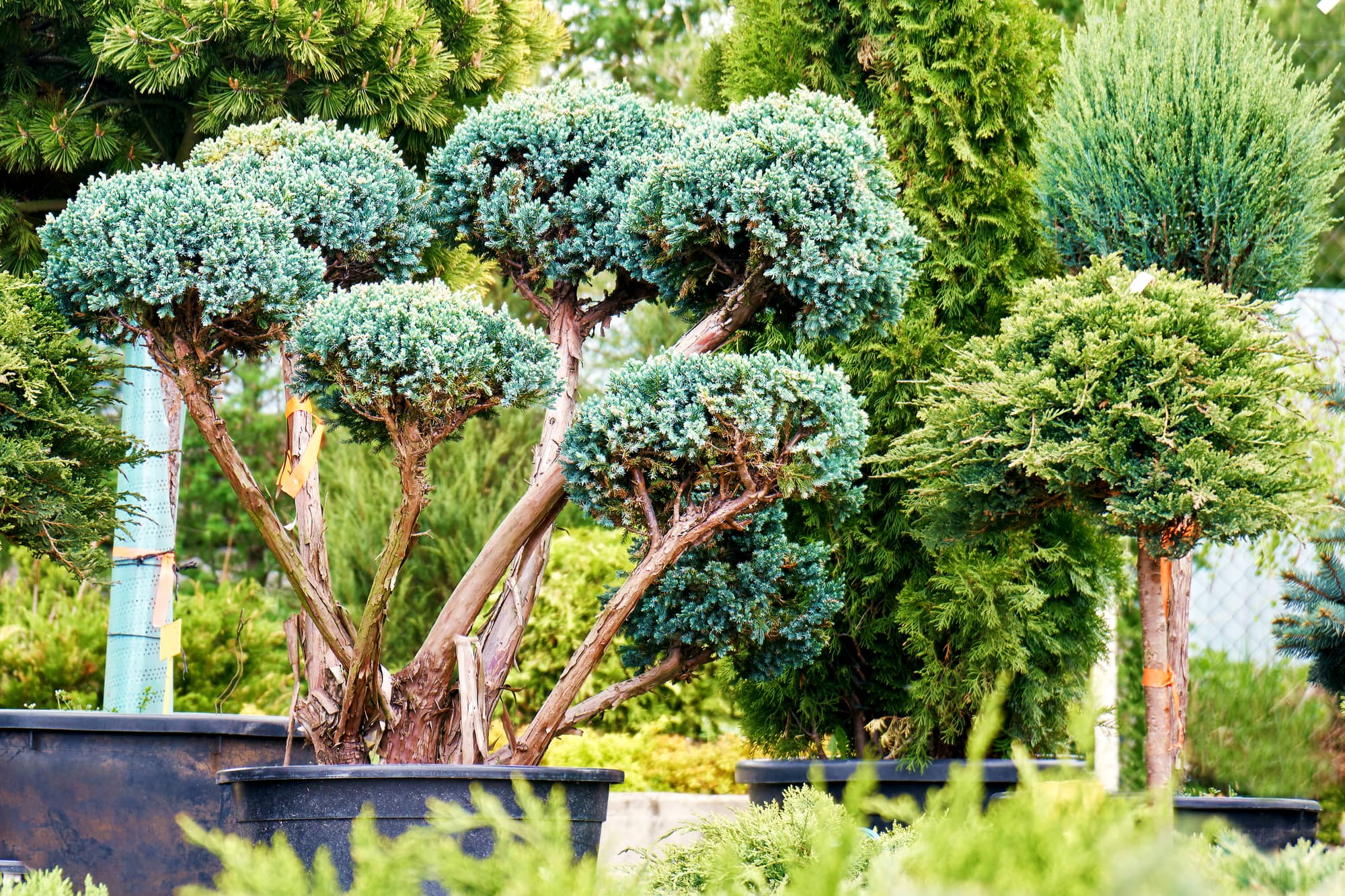
- Scientific name: Juniperus spp.
- Hardiness zone: 3-9
- Light requirements: Full sun to part shade
Conclusion
When thinking about building a pond, it’s important to think about the land and water as one ecosystem that works together.
Plants can help provide food and protection, control water quality, lessen the effects of erosion, and give a better overall aesthetic to the aquatic feature. If possible, use native plants to cultivate a safe and natural ecosystem.
If you have any questions about the different species of plants available for pond owners or have had experience building a pond from the ground up, don’t hesitate to leave a comment below!

